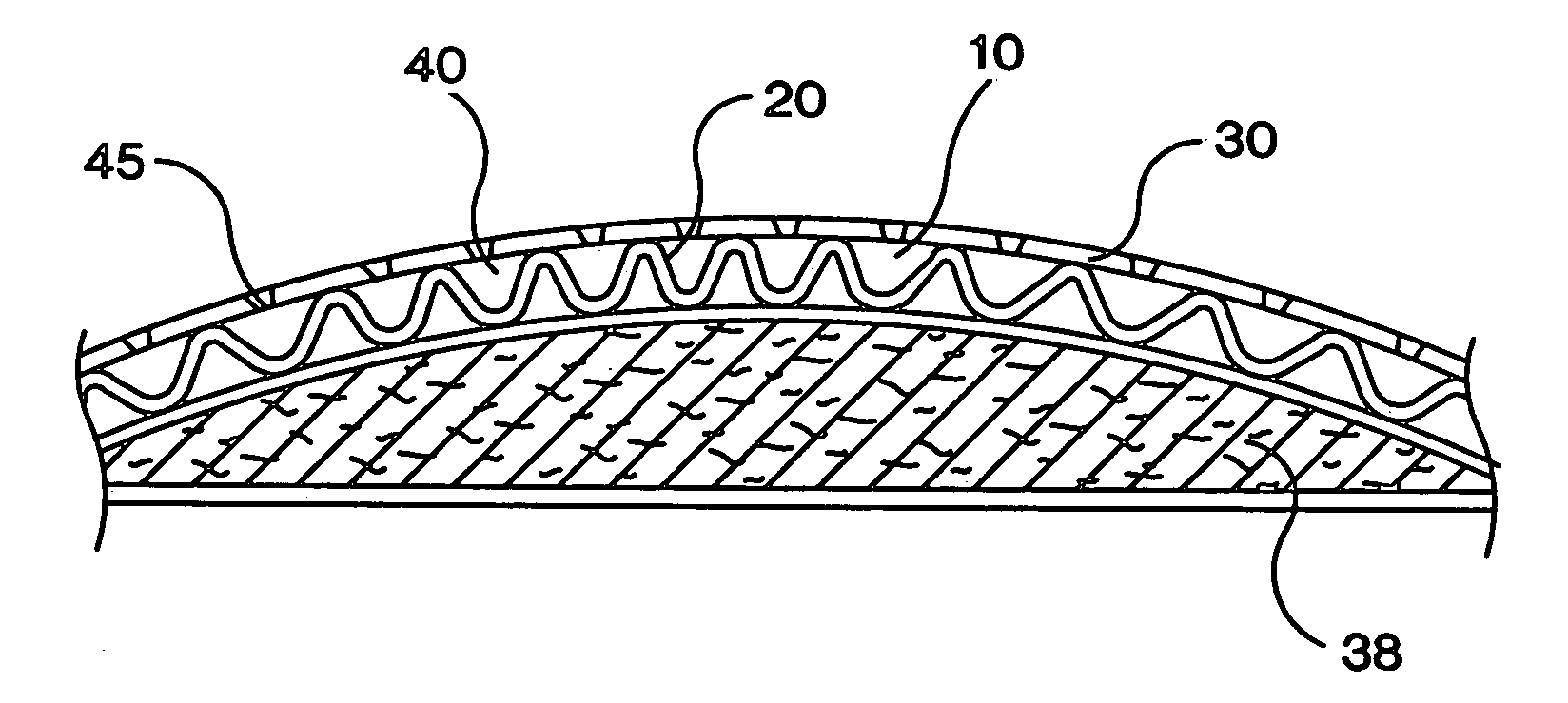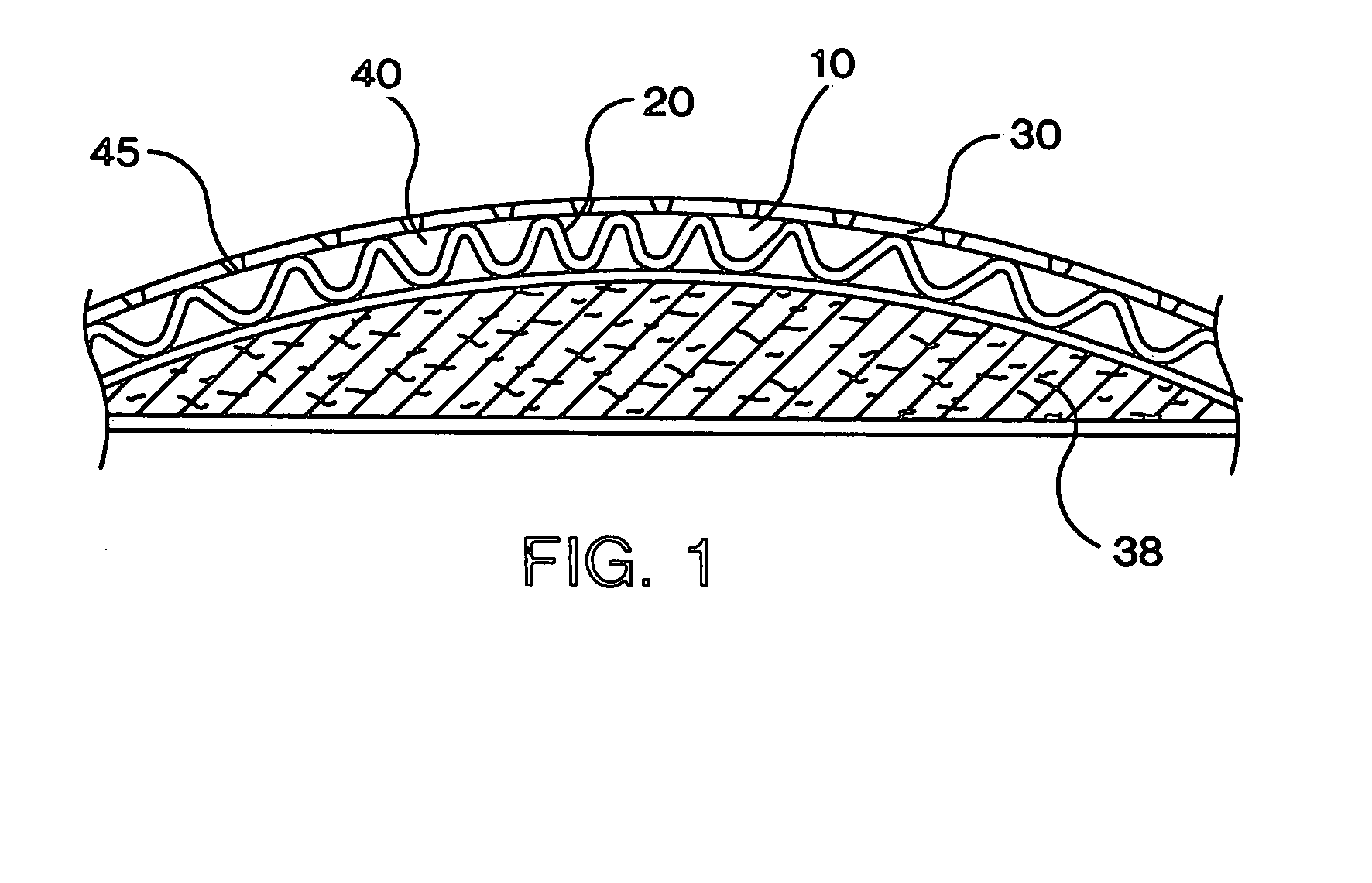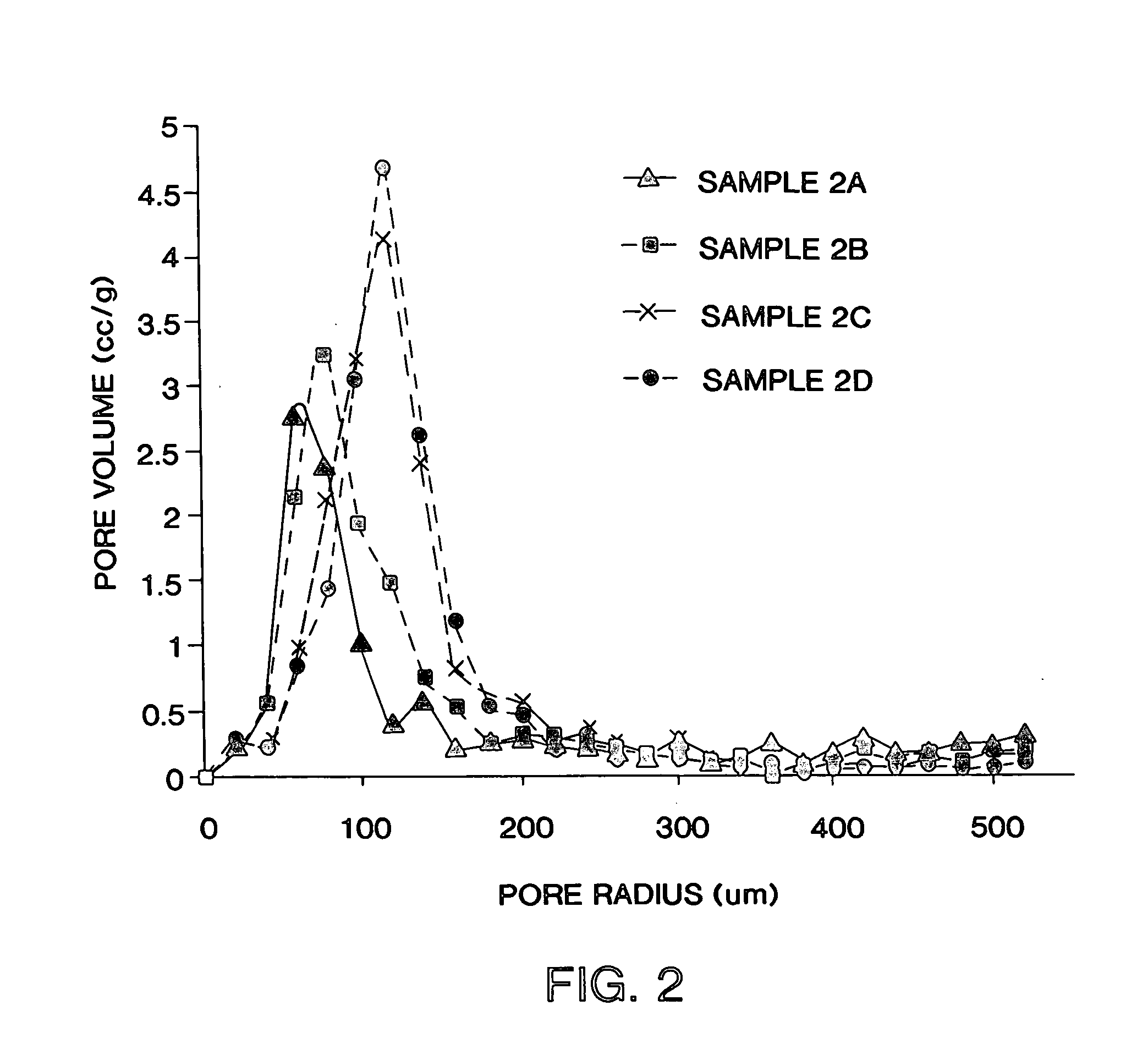Structured material and method of producing the same
a structured material and material technology, applied in the field of structured material production, can solve the problems of poor skin health, leakage of conventional cover materials used in personal care absorbent articles, poor viscosity, etc., and achieve the effects of fast intake rate, high viscosity, and quick and efficient handling of menses
- Summary
- Abstract
- Description
- Claims
- Application Information
AI Technical Summary
Benefits of technology
Problems solved by technology
Method used
Image
Examples
example 1
[0108]A structured composite material 10 produced according to this invention having a first layer 20 made of a polypropylene polymer and a second layer 30 made of an ethylene-propylene copolymer 30 was tested for menses and rewet performance. The polypropylene polymer was made by the Exxon Mobil Chemical Company under the trade designation Exxon 3155 and the copolymer was made by Union Carbide under the trade designation 6D43. The structured composite material 10, as well as the other materials tested, were treated with 0.3% Ahcovel surfactant add-on. Ahcovel is made by Uniqema Inc., a division of ICI of New Castle, Del. The control code for the test was a standard polypropylene pad wrap produced commercially from Berkeley, 0.6 osy, EHP bond pattern, 0.3% Ahcovel treatment. The five codes were treated using a bench top dip and squeeze method.
[0109]As shown in FIG. 8, the structured composite material 10 (107-7 in FIG. 8) produced by differential shrinkage outperforms the other code...
example 2
Polypropylene with 5% Kaolin / Ethylene-Propylene Copolymer
[0110]Five structured composite materials 10 were produced according to this invention having a first layer 20 made of a polypropylene polymer (“PP”) with 5% Kaolin filler and a second layer 30 made of an ethylene-propylene copolymer (“CP”) which contained 3% by weight ethylene and 97% by weight propylene. The polypropylene polymer was made by the Exxon Mobil Chemical Company under the trade designation Exxon 3155 and the copolymer was made by Union Carbide under the trade designation 6D43. Kaolin is a clay filler made by ECC located in Roswell, Ga. Each sample, except the control sample, was passed through a cure oven at a rate of about 50 fpm or about 250 fpm at a temperature of about 270° F. to about 290° F. The five samples were tested for bulk, basis weight, air permeability, cup crush energy, cup crush load and tensile strength. Table 2 shows the results of these tests.
[0111]
TABLE 2BasisBasisAirCup CrushCup CrushBulkWeig...
example 3
[0112]Polypropylene / Ethylene-Propylene Copolymer
[0113]Five structured composite materials 10 were produced according to this invention having a first layer 20 made of the above polypropylene polymer and a second layer 30 made of the above ethylene-propylene copolymer. Each sample, except the control sample, was passed through a cure oven at a rate of about 50 fpm or about 250 fpm at a temperature of about 270° F. to about 290° F. The five samples were tested for bulk, basis weight, air permeability, cup crush energy, cup crush load and tensile strength. Table 3 shows the results of these tests.
[0114]
TABLE 3BasisBasisAirCup CrushCup CrushBulkWeightWeightDensityPerm.EnergyLoadSample(in)(osy)(g / m2)(g / m2)(cfm)(gm / mm)(gm)PP / CP0.0160.7023.300.0581054 22618ControlPP / CP0.0571.1038.100.02681573656250 fpm / 280° F.PP / CP0.0310.8028.400.0341006 1991650 fpm / 270° F.PP / CP0.0741.5050.700.0277771299 106 50 fpm / 280° F.PP / CP0.0861.9063.600.0308111959 143 50 fpm / 290° F.GrabGrabGrabGrabPeakPeakPeakPeakGra...
PUM
| Property | Measurement | Unit |
|---|---|---|
| Temperature | aaaaa | aaaaa |
| Temperature | aaaaa | aaaaa |
| Temperature | aaaaa | aaaaa |
Abstract
Description
Claims
Application Information
 Login to View More
Login to View More - R&D
- Intellectual Property
- Life Sciences
- Materials
- Tech Scout
- Unparalleled Data Quality
- Higher Quality Content
- 60% Fewer Hallucinations
Browse by: Latest US Patents, China's latest patents, Technical Efficacy Thesaurus, Application Domain, Technology Topic, Popular Technical Reports.
© 2025 PatSnap. All rights reserved.Legal|Privacy policy|Modern Slavery Act Transparency Statement|Sitemap|About US| Contact US: help@patsnap.com



